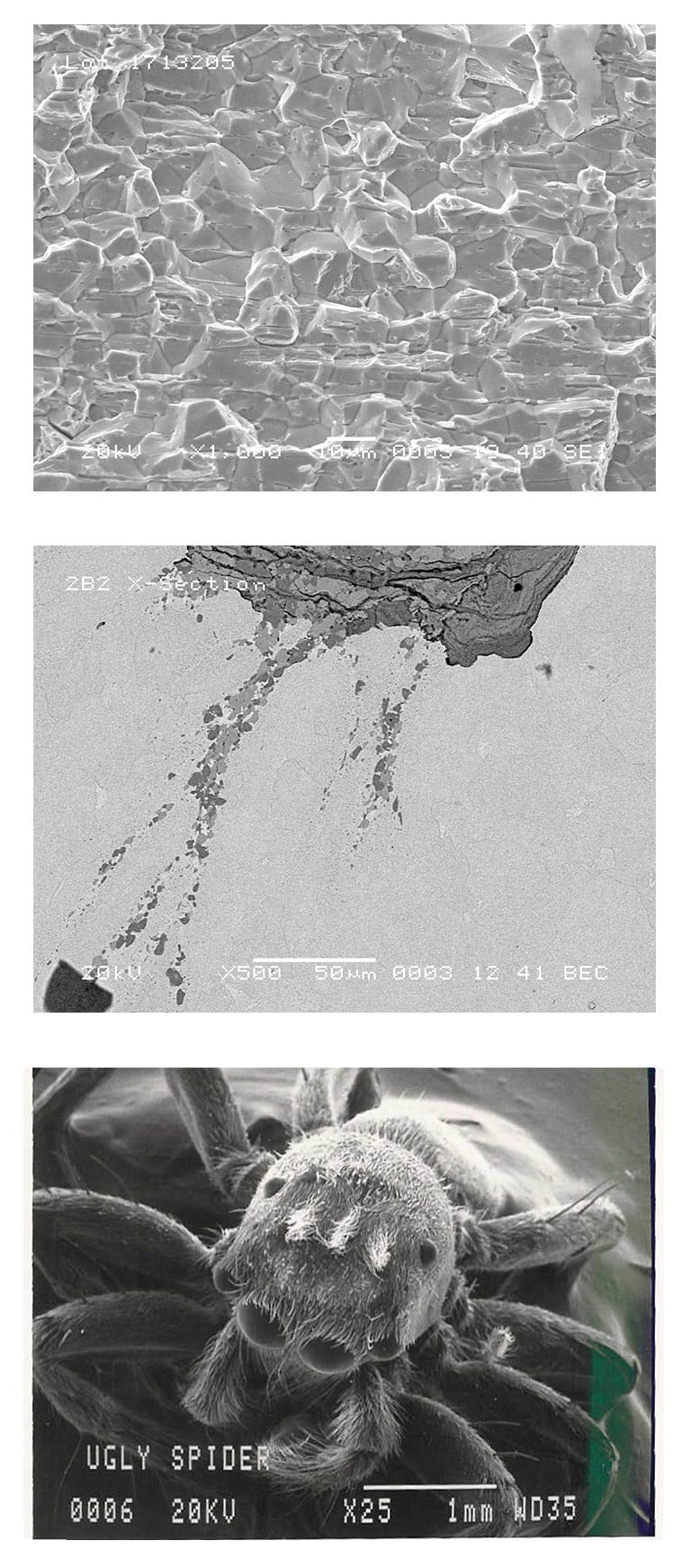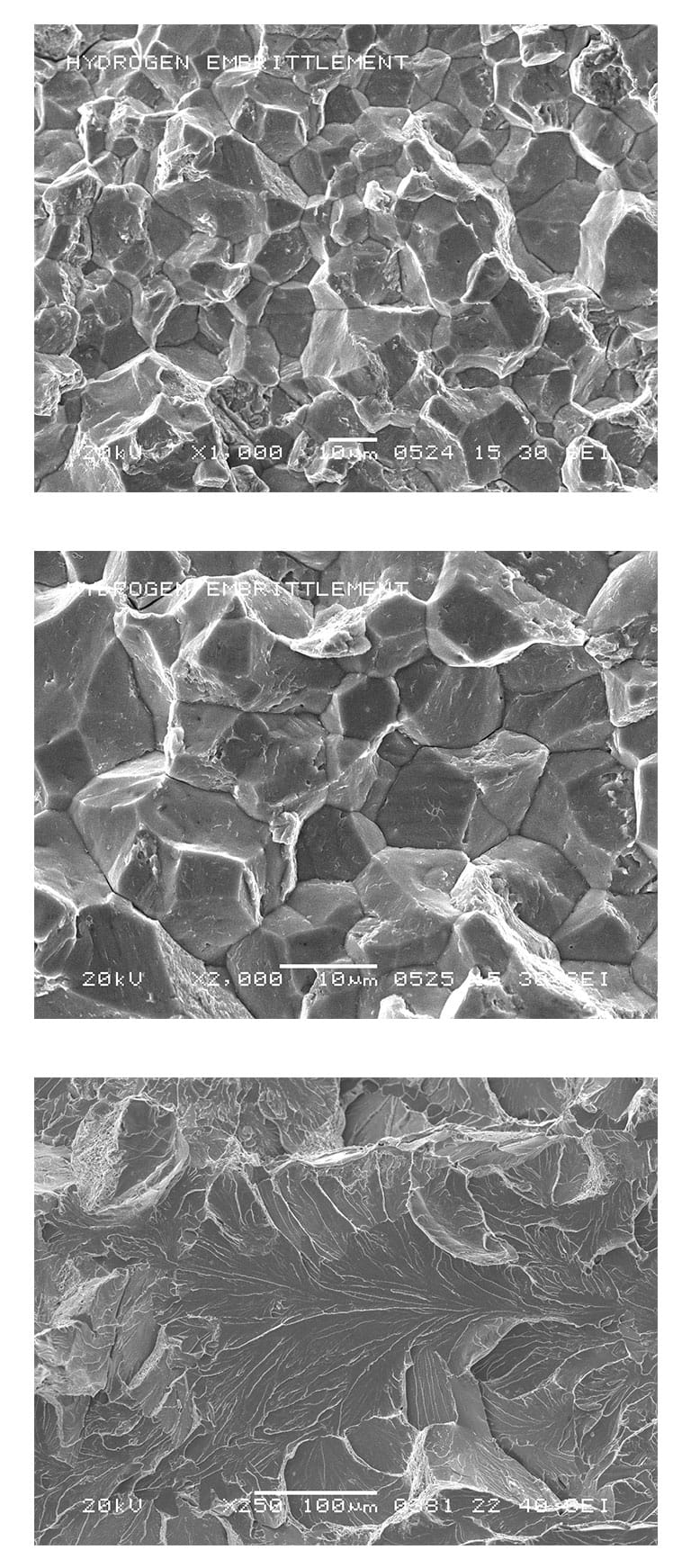


What is Scanning Electron Microscopy (SEM)?
Scanning Electron Microscopy (SEM) is a means for obtaining high resolution three dimensional like images of solid samples. Variation in the surface topography of a material are depicted as variations in
gray scale level of the image.
What Information can Scanning Electron Microscopy Provide?
An SEM can provide detailed images where 70 Angstroms can be resolved on most samples. Micron Inc utilizes a JEOL 6480 Tungsten source SEM which routinely captures images ranging in magnification from 8X to 20,000X. The JEOL 6480 SEM also has additional features, such as a large sample chamber that can accommodate samples with maximum dimensions of 126 mm (length) x 100mm (width) x 80 mm (height).
What Materials can be analyzed using Scanning Electron Microscopy Provide?
Any solid materials such as metals, polymers, ceramics, pharmaceuticals, powders, fracture surfaces,
and much more.




